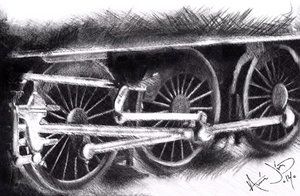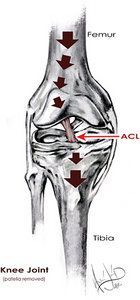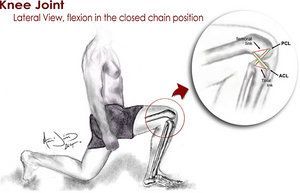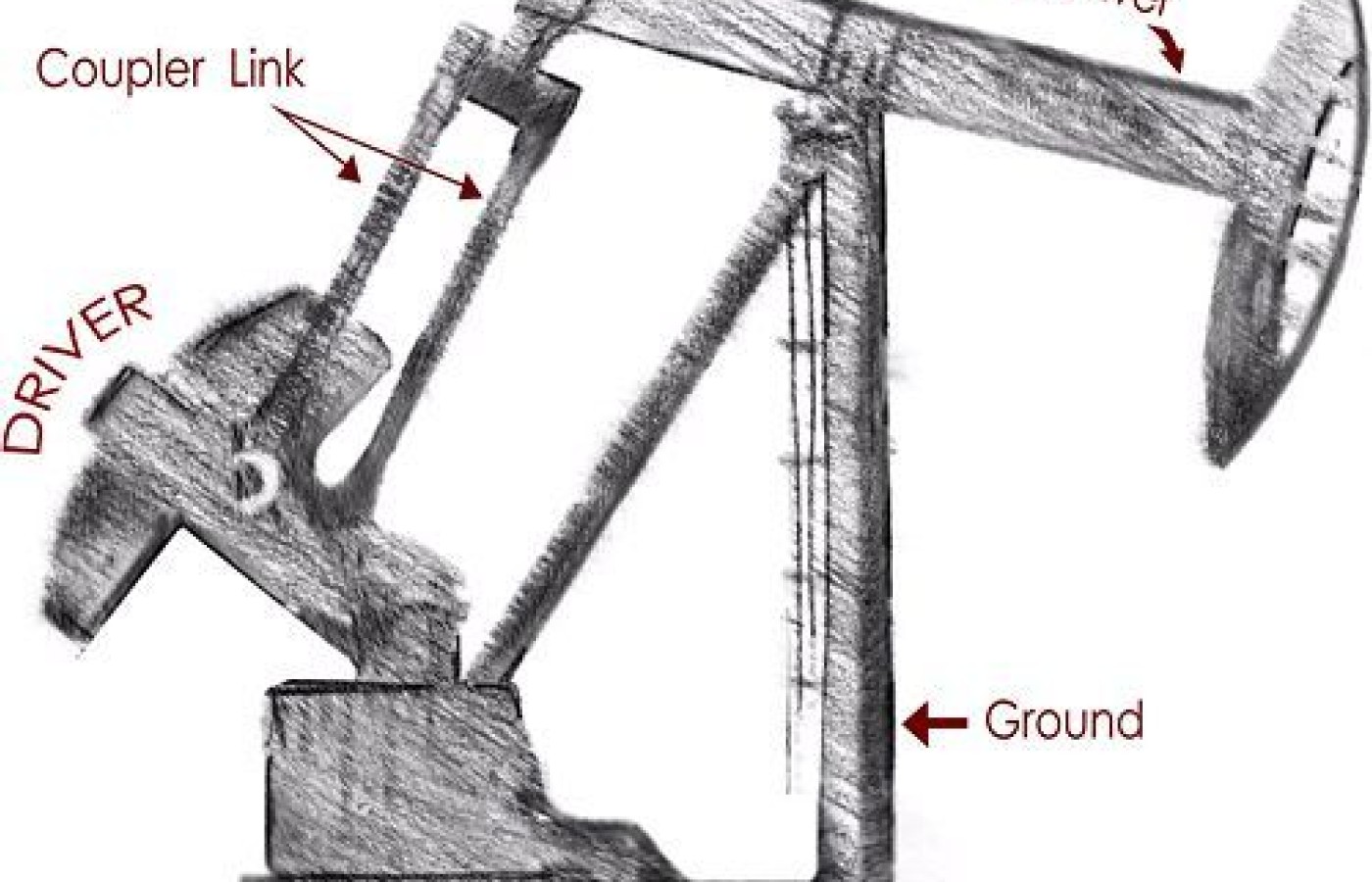Some doctors thrive in a personality-based clinic and have a loyal following no matter what services or equipment they offer, but for most chiropractic offices who are trying to grow and expand, new equipment purchases help us stay relevant and continue to service our client base in the best, most up-to-date manner possible. So, regarding equipment purchasing: should you lease, get a bank loan, or pay cash?
Appreciating Knee Function: The Amazing Four-Bar Mechanism
On first blush, the knee joint may appear to be a relatively simple, stable joint that hinges through a single pivot point with several key anatomic points of strength. Yet if one takes a detailed look at the anatomy and function of the knee, its complexities quickly become evident. The knee joint is not simple; it is a complex compound joint that deserves a deep appreciation from musculoskeletal clinicians.
The knee is the largest synovial articulation and has the largest synovial reservoir in the human body. It is not a hinged joint, but is considered a complex compound joint due to the irregular joint surfaces, the menisci, the presence of intra-articular ligaments (anterior cruciate and posterior cruciate), and the compounded articulations of the tibia with the femur and the patella with the femoral condyles.
More than a dozen muscles cross the knee joint. Additionally, several other joints and muscles contribute to the motion, function and stability of the knee.
The Four-Bar Mechanism
To many clinicians, it may appear that the function of the anterior cruciate and posterior cruciate ligaments (ALL and PLL) is to limit anterior and posterior shear of the knee, as well as prevent rotation of the tibia in relation to the femur. This is what we were taught in orthopedics as we learned to perform the drawer and Lachman's tests of the knee.

In reality, the function of these ligaments is more than merely their contribution to knee stability. These ligaments are vital in transferring power from the muscles of the hip and pelvis (particularly the gluteus maximus and medius) to the leg. This transfer of power is done through the four-bar mechanism created by the degree of tension of these ligaments, and the stiffness of the tibia and femur.1-4
A four-bar mechanism is a simple closed-chain linkage composed of four bars (also referred to as links) and joined by four pivoting connections.5 This mechanism provides efficiency of motion, strength and stability.
Examples of four-bar mechanisms in engineering include vise-grips, lever-armed water pumps, car jacks, oil well pumps, folding chair mechanisms, and umbrellas. This mechanism is so efficient that many of the more modern prosthetic knees (for above-the-knee amputations) are now made with four-bar linkages. Researchers are trying to emulate this naturally occurring mechanism in knee-replacement prostheses.
The four-bar mechanism of the knee is a relatively simple apparatus that transfers power while maximizing leverage and minimizing energy loss. It is part of a broader biotensegrity system, which combines contractile and non-contractile tissues to efficiently transfer power and motion through the musculoskeletal system with minimal energy expenditure.

The four links transfer power and motion from relatively distant sources of power through a driver. In the knee, the femur, which is the longest lever in the body, acts as the driver as it transfers power from the gluteal muscles through its stiffness and strength to create tension on the ALL and PLL. This tension moves the femur relative to the plane(s) of the tibial plateau.
(It should be noted that the four-bar mechanism of the knee does not exactly mirror man-made mechanical models of four-bar machines. The ACL and PCL are relatively stiff only while under load, and even when under load, they maintain some elasticity.)
Certainly the ALL and PLL do not work autonomously in transferring power. The lower extremity is a complex aggregate of structures that includes ligaments, muscles, joint capsules and fascia. There is a concert of activity between these structures during knee motion.

While each of these components is important, the gluteal muscles have a prominent role in both power transfer and protection of the knee.6-10 This knee-gluteal muscle relationship is particularly interesting since the gluteal muscles do not directly attach to or even reside near the knee.
Closed-Chain Motions vs. Open-Chain Motions
Closed-chain motions of the lower extremities are motions such as lunges or squatting motions during which the feet are in contact with the ground or another immobile surface. Open-chain motions of the lower extremity are motions or exercises that allow the foot to move freely, such as leg extensions or leg curls.
The four-bar mechanism of the knee is particularly valuable at transferring power and motion from the muscle of the hip and pelvis while in closed-chain, yet may be less effective in open-chain. Rehabilitation and performance enhancement training should emphasize closed-chain exercises like squatting motions, kettlebell swings, lunges, and lunge walks; and de-emphasize open-chain exercises such as the leg extension.
The Problem With Leg Extensions
In athletics and activities of daily living, muscles do not work in isolation. Because of this, it is unwise to train muscles in isolation. The leg extension machine isolates the quadriceps in an open chain and places the ACL under considerable and constant load while the exercise is being performed.11-13 Leg extensions also place considerable shear force through the knee joint.11

Twenty years ago, leg extension machines were found in most rehabilitation facilities, although now they have all but vanished. Functional-minded gyms and cross-fitness facilities typically do not have these machines or other muscle isolation machines that became popular in the bodybuilding culture of the 1960s and 1970s.
Training the legs using an open-chain apparatus like the leg extension machine has little correlation to athletic performance or activities of daily living. In fact, "kicking" may be the main open-chain athletic motion the leg extension exercise simulates in any semblance.
Certainly leg extensions should be avoided by patients with ACL injuries and/or post-knee-surgery patients. We as physicians should also steer our other patients away from this potentially harmful exercise. The trend in knee rehabilitation and athletic training is away from the use of open-chain machines like the leg extension machine.
Clinical Applications
While we will endeavor to further develop clinical applications in upcoming installments of this series, here are some applications that can be applied from knowing that the knee joint is a very effective mechanism at transferring forces from the hip and pelvis:
- In older patients or patients who have difficulty in performing sit-to-stand motions, you should train the patients to activate and use their gluteal muscles to stand from a sitting position. (We will address the details of this in a future installment in this series.)
- Train the muscles of the lower extremity in closed-chain motions like lunges, squatting motions and gluteal bridging; and de-emphasize open-chain exercises such as the leg extension and the leg curl.
- Remember that strong, activated gluteal muscles protect the knee from injury and enhance athleticism.
The mechanism that accounts for gluteal protection of the knee will be addressed in the next installment of this ongoing series on chiropractic management of lower extremity disorders.
Editor's note: Review the first two articles in this series on lower extremity disorders in the Jan. 15 and March 1 issues.



